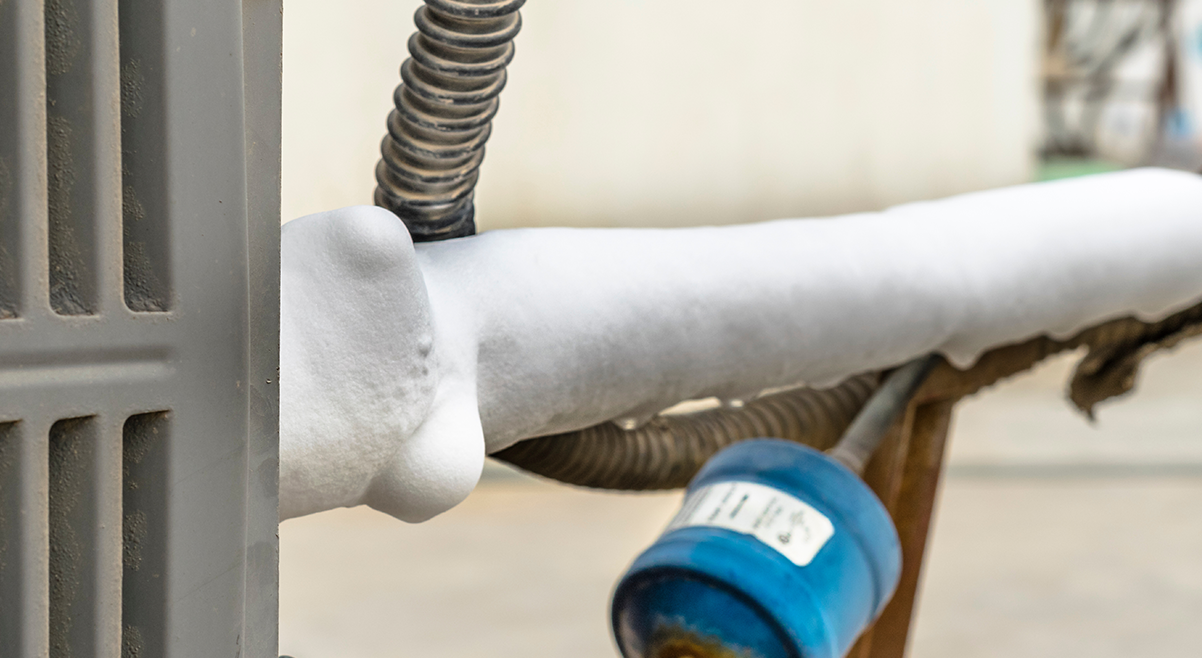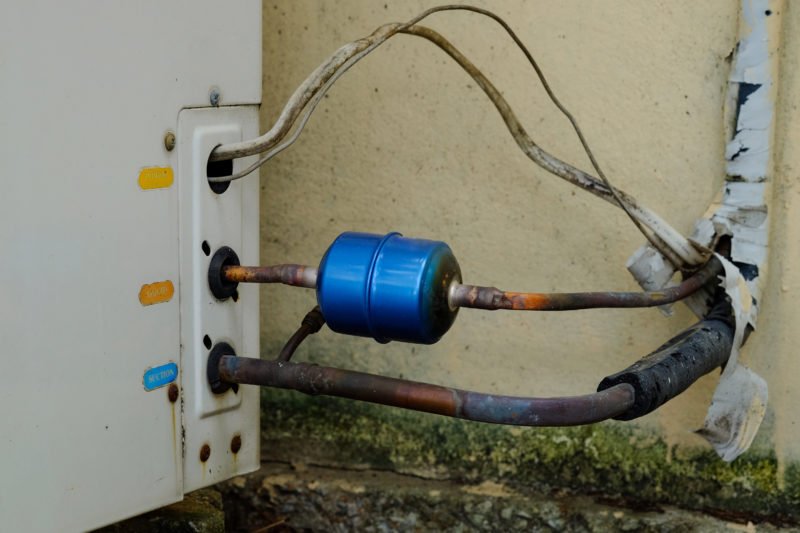Steps to Follow When Your AC Pipe Freezes: Essential Advice
Steps to Follow When Your AC Pipe Freezes: Essential Advice
Blog Article
The content in the next paragraphs on the subject of What Causes AC Pipes To Freeze? is relatively engaging. Don't overlook it.

Intro
Uncovering that your air conditioner pipeline is iced up can be worrying, especially during warm summertime when you depend on your a/c unit the most. Understanding what to do in such a situation is crucial to stop more damages to your cooling system and ensure your convenience inside your home.
Understanding the Causes
Numerous factors can add to the freezing of an air conditioner pipeline. Understanding these causes can assist you resolve the concern effectively.
Lack of Airflow
One common reason for a frozen air conditioning pipe is inadequate air flow. When the air flow over the evaporator coil is restricted, it can cause the coil to drop below freezing temperature, leading to ice development on the pipeline.
Low Refrigerant Levels
Not enough cooling agent degrees in your air conditioning system can also result in a frozen pipeline. Reduced cooling agent levels can cause the pressure in the system to drop, leading to the cold of wetness on the evaporator coil.
Cold Weather Conditions
In chillier environments, freezing temperature levels outside can contribute to the cold of air conditioning pipes. If your AC system is not properly shielded or if there are leaks in the ductwork, cold air can infiltrate the system, triggering the pipeline to ice up.
Dirty Air Filters
Unclean or clogged air filters can restrict air movement in your air conditioning system, leading to different problems, including an icy pipeline. It's important to change or clean your air filters routinely to make sure correct airflow and avoid ice accumulation.
Indicators of a Frozen Air Conditioner Pipe
Recognizing the signs of a frozen air conditioning pipe is important for timely action.
Decreased Airflow
If you discover a considerable decrease in airflow from your vents, it can show a frozen pipeline.
Ice Buildup on the Pipe
Noticeable ice accumulation on the refrigerant line or the evaporator coil is a clear sign of an icy air conditioning pipe.
Weird Sounds from the Unit
Unusual noises, such as hissing or bubbling, originating from your air conditioning unit can signify that there's ice present on the pipe.
Immediate Actions to Take
When faced with a frozen a/c pipe, it's necessary to act swiftly to avoid more damages to your air conditioning system.
Turning off the AC
The initial step is to shut off your ac unit to stop the system from running and aggravating the issue.
Checking for Blockages
Inspect the location around the interior system for any blockages that might be blocking air flow, such as furnishings or curtains.
Thawing the Pipe
You can use mild techniques like placing towels taken in warm water around the icy pipe to aid thaw it slowly.
Safety nets
Taking preventive measures can aid prevent future incidents of a frozen air conditioner pipe.
When DIY Methods Fail
If your efforts to thaw the pipeline or address other concerns are unsuccessful, it's time to hire a specialist.
Relevance of Hiring a Professional HVAC Technician
A licensed HVAC technician has the experience and tools essential to identify and fix problems with your AC system securely and properly.
Regular Maintenance Checks
Arrange regular maintenance consult a professional HVAC technician to ensure that your a/c system is running effectively.
Transforming Air Filters
Consistently change or cleanse your air filters to stop airflow limitations and preserve ideal performance.
Protecting Exposed Pipes
If your air conditioning pipes are revealed to cool temperature levels, take into consideration protecting them to stop cold throughout winter season.
Seeking Professional Help
If DIY approaches fail to resolve the concern or if you're not sure about just how to continue, it's ideal to look for support from a qualified HVAC professional.
Final thought
Dealing with an icy air conditioner pipe can be a frustrating experience, yet knowing just how to respond can help lessen damage and restore comfort to your home. By recognizing the causes, acknowledging the indicators, and taking punctual action, you can successfully attend to the concern and avoid future incidents.
What to Do If Your AC Line Is Frozen
Make Sure All Supply and Return Air Vents Are Open
If you notice problems with airflow, the first thing you should do is check your supply and return vents. Supply vents distribute clean, conditioned air throughout your home. As this air becomes stale, it’s pulled into the return vent, where it’s reconditioned before being sent back out through the supply vent.
When these vents are closed, air won’t flow in the home. Before examining your AC, check the vents in every room and ensure they’re all open.
Check for a Dirty Air Filter
Another possible cause of limited airflow is a dirty air filter. Your air conditioner’s filters catch elements you don’t want to breathe in, such as dirt and dust. Over time, filters can become clogged, ultimately blocking air from flowing in and out. The lack of airflow can then cause the entire coil to freeze and will completely restrict any air from moving through it. The AC may need to be powered off for one to two days to allow the coil to thaw after replacing the filter to allow proper functioning of the unit. This debris can also accumulate on your AC’s evaporator coil, requiring a more serious repair. In general, air filters should be cleaned regularly (about every two weeks).
Assess Your Outdoor Unit
In addition to checking your AC, assessing the outdoor unit is a good idea. Also known as the condensing unit, it works with your interior unit to release heat outside. An issue with the outdoor unit can result in rising internal temperatures.
Overgrown Shrubs or Clogged Leaves
From leaves and twigs to shrubs and debris, there’s no shortage of outdoor elements that can accumulate around your condensing unit. When these elements get lodged inside the unit, they can block airflow. Fortunately, removing the blockage can solve the problem.
Sounds of a Broken Fan
Shrubs and leaves aren’t the only things that can impede your outdoor unit’s airflow. If the fan is broken, the unit won’t be able to properly get rid of heat — which means the internal temperature won’t go down. First, make sure the fan is spinning. If it is, check for the following sounds of a broken fan:
Buzzing Rattling Screeching Hissing Clicking Preventative Measures
Nobody wants to deal with a frozen AC line. In addition to causing problems with your air conditioner, they require professional repairs. On the bright side, there are preventative measures you can take to help ensure this issue doesn’t arise in the first place.
https://www.coopergreenteam.com/blog/what-to-do-if-ac-line-frozen

As a person who reads about Why Is Ice On My Outside Air Conditione, I thought sharing that piece of content was sensible. Feel free to set aside a second to distribute this entry if you liked it. Thank you for your time invested reading it.
Visit Url Report this page